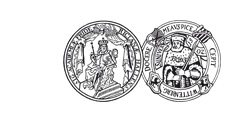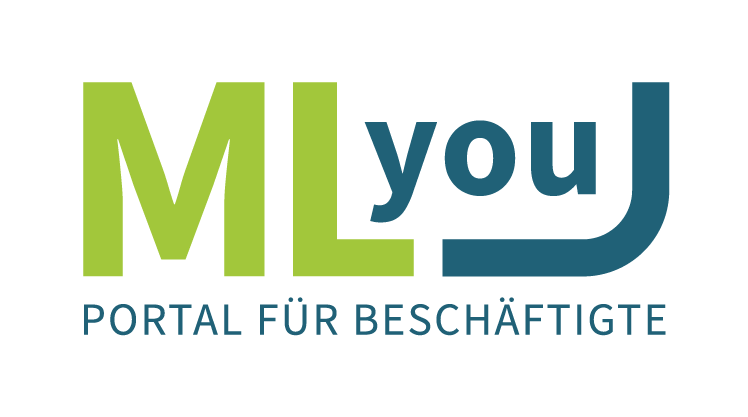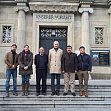Archäologischer Survey in Khalifan (Autonome Region Kurdistan, Irak)
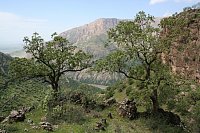
Überblick Khalifan
Der Khalifan-Survey ist in einem beinahe unerforschten Gebiet des Zagros-Gebirges im Nordirak angesiedelt. Die wenigen Ausgrabungen in dieser Region fanden bereits in der ersten Hälfte des 20. Jh. statt und haben sich auf prähistorische Fundplätze, wie etwa Banahilk (Spätneolithikum) und Zawi Chemi (Frühneolithikum) konzentriert. Spätere Forschungen der irakischen Antikenbehörde standen hier vor allem mit den Bauarbeiten am Bekhme-Staudamm am Großen Zab in Zusammenhang. Bis zu Beginn des Khalifan-Surveys 2014 waren insgesamt 10 Siedlungsplätze und Höhlen im Khalifan-Distrikt bekannt, deren Fundmaterial oft nicht datierbar war. Die wenigen Datierungsangaben, die gemacht wurden, deuten für einzelne Fundplätze ins ausgehende 3./frühe 2. Jt. v. Chr. oder in die islamische Zeit.
Die jüngsten Feldbegehungen der Jahre 2014-2018 zeigen nun, dass sich auch in dieser schroffen Bergregion ohne weitläufige Agrarflächen das Siedlungsgefüge weiter verdichten lässt und sich auch die erheblichen chronologischen Lücken nach und nach schließen lassen. Inzwischen sind gibt es deutliche Hinweise auf eine Besiedlung des Gebiets auch im ausgehenden 2. und 1. Jt. v. Chr. Dieser Zeitraum ist besonders in Hinblick auf die historischen Quellen zum Urartu-Assyrien-Konflikt in neuassyrischer Zeit von besonderem Interesse, denn der Khalifan-Distrikt wird auf den historischen Landkarten zu dieser Epoche in der Regel als eine leere Pufferzone zwischen den beiden Großmächten Assyrien und Urartu definiert. Einen wichtigen Forschungsschwerpunkt bilden zurzeit auch die zum Teil massiven Befestigungsanlagen, die in diesem Gebiet erstmalig bekannt geworden sind und sich gut mit spätbronze- und eisenzeitlichen Anlagen aus dem westlichen Urmia-Gebiet vergleichen lassen.
Das Projekt unter der Leitung von Dr. Claudia Beuger findet in Kooperation mit dem General Directorate of Antiquities Erbil (namentlich Kaifi Mustafa Ali) und dem Department of Antiquities Soran (namentlich Abdulwahhab Sulaiman Hasan) statt. Ermöglicht wurden die Arbeiten durch Förderungen des International Office der Martin-Luther-Universität Halle-Wittenberg (2014, 2017), der Franz-und-Eva-Rutzen-Stiftung (2016), Deutschen Orient-Gesellschaft e.V. (2015-2017, 2019), Gerda Henkel Stiftung (2017-2019) sowie der Fritz Thyssen Stiftung (2018-2019).
Seit 2020 konnte das Scientific Research Centre (SRC) der University of Soran als neuer wichtiger Kooperationspartner gewonnen werden. In enger Zusammenarbeit mit Prof. K. Kolo, Dr. R. Hamad und Dr. O. Mahmoud (University of Soran), PD Dr. T. Kerig (CAU Kiel), Dr. Jutta Lechterbeck (University of Stavanger) und Dr. Tobias Helms (JGU Mainz) wird derzeit ein Fernlehre-Curriculum zu zentralen Themen der Vorderasiatische Archäologie und archäologischen Arbeitsmethoden entwickelt.
Publikationen:
C. Beuger/T. Helms/A. Suleiman/M. A. Dlshad/H. Hussein, Archäologische Forschungen im nordwestlichen Zagros, Vorläufige Ergebnisse aus den Feldbegehungen in Khalifan (Distrikt Soran), Mitteilungen der Deutschen Orient-Gesellschaft zu Berlin 147, 2015, 129-163.
C. Beuger/R. Heitmann/S. Schlüter/A. Suleiman/M. A. Dlshad/H. Rashid/ H. Hussein, Archäologische Forschungen im nordwestlichen Zagros, Bericht zum Khalifan-Survey 2016-2017, Mitteilungen der Deutschen Orient-Gesellschaft zu Berlin 150, 2018, 45-88.
C. Beuger, Im Land des Drachen – Überlegungen zu frühen Christen im Khalifan-Distrikt, in: K. Kaniuth/D. Lau/D. Wicke (Hrsg.), Übergangszeiten. Altorientalische Studien für Reinhard Dittmann anlässlich seines 65. Geburtstags, marru 1, 2018, 387-397.
C. Beuger, A bronze figurine from Gali Bla valley, Khalifan-district, Iraqi Kurdistan, (in Vorb.).
C. Beuger/R. Heitmann/S. Schlüter/A. Suleiman, Preliminary results of the Khalifan Survey Project 2014-2018 (Kurdistan Region of Iraq), Publications of 12th International Congress on the Archaeology of the Ancient Near East, held on 6.-10. April 2021 in Bolonga (in Vorb.).
Ausgrabungen in Pir Wali (Khalifan, Autonome Region Kurdistan, Irak)
Pir Wali ist ein ca. 0,6 ha großer Fundplatz, der erstmals im Zuge des Khalfian Survey Projekts 2016 dokumentiert wurde. Der Fundplatz liegt auf einer schmalen Landzunge am Rawanduz-Fluss (bzw. Khalan Su), einem Nebenfluss des Großen Zab. Das Gelände war und ist massiv vom Kiesabbau bedroht. Allerdings haben gerade diese Baggerarbeiten ungewöhnlich viele Keramikfunde ans Licht gebracht. Daher war schnell klar, dass diesem Fundplatz größere Aufmerksam zuteilwerden sollte. Nach gezielten Voruntersuchungen 2017 und 2018 konnte dann im Herbst 2019 eine vierwöchige Grabungskampagne durchgeführt werden.
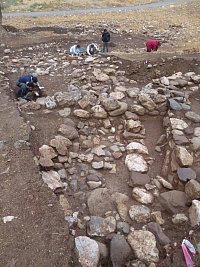
Pir Wali 2019, Blick auf die massive Architektur der spätassyrisch datierenden Schicht.
Die Ausgrabungen haben eine unerwartet dichte Abfolge von Bauschichten ans Licht gebracht: Mehrere Bauphasen einer nach C14-Daten ins 4. Jh. v. Chr. bis 2. Jh. n. Chr. datierende Wohnhausarchitektur überlagern mindestens zwei eisenzeitliche Schichten mit massivem Mauerwerk. Durch die Hanglage und Oberflächennähe war eine stratigrafische Zuweisung der zahlreichen Keramikfunde bisher nur selten möglich. Doch es zeichneten sich während der Grabungen zwei deutlich voneinander zu trennende Keramikhorizonte ab, die möglicherweise mit diesen beiden Bauschichten zu korrelieren sind. Eine Mauerecke mit bis zu 1,5 m breiten Mauern ist mit einer feineren Scheibenware zu verbinden, die sich gut in das Gefäßspektrum des spätassyrischen Kernlandes (7. Jh. v. Chr.) fügt. Für den tieferliegenden Horizont ist eine grobe, handgeformte Keramik charakteristisch, die der sogenannten Late Western Grey Ware in Iran (8. Jh. v. Chr.) entspricht. Möglicherweise zählen zu letzterem Horizont auch die zahlreichen Funde von Kaurischnecken, Karneolperlen, Bronzeringen, -zierbuckeln, -rosetten, und -fibeln sowie die einzelnen Siegel- oder Amulettfunde, die man im nordwestlichen Iran besonders aus eisenzeitlichen Gräbern kennt. Des Weiteren lassen die Keramikfunde eine Nutzung des Fundplatzes mindestens seit der Späten Frühbronzezeit vermuten.
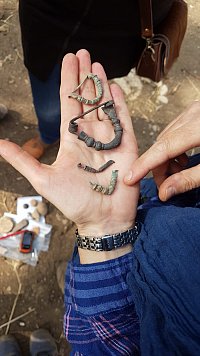
Pir Wali 2018, Bronzefibeln (8./7.-5./4. v. Chr.; nach F. Pedde, Vorderasiatische Fibeln, Von der Levante bis Iran, Abhandlungen der Deutschen Orient-Gesellschaft 24, 2000).
Eine der zentralen Fragen des Khalifan Survey Projektes war, ob dieses Gebiet noch als Teil der assyrischen Provinz Ḫabruru, die in der westlich gelegenen Harir-Ebene vermutet wird, zu definieren ist. Da Pir Wali auch nach Abschluss des Khalifan Surveys der einzige Fundplatz mit eindeutig neuassyrischer Keramik ist, sollte das verneint werden. Nach bisherigem Stand der Untersuchungen wird Pir Wali lediglich als assyrischer Außenposten interpretiert.
Das Projekt unter der Leitung von Dr. Claudia Beuger findet in Kooperation mit dem General Directorate of Antiquities Erbil und dem Department of Antiquities Soran statt. Ermöglicht wurden die Ausgrabungen 2019 durch der Unter-stützung der Gerda Henkel Stiftung und der Deutsche Orient Gesellschaft.
Publikationen:
C. Beuger/R. Heitmann/S. Schlüter/A. Suleiman/M. A. Dlshad/H. Rashid/ H. Hussein, Archäologische Forschungen im nordwestlichen Zagros, Bericht zum Khalifan-Survey 2016-2017, Mitteilungen der Deutschen Orient-Gesellschaft zu Berlin 150, 2018, 45-88.
C. Beuger/R. Heitmann/S. Pastwa/S. Schlüter/A. Suleiman, Assyrer im nordwestlichen Zagros? Bericht zu den Grabungskampagnen 2017-2019 in Pir Wali, Mitteilungen der Deutschen Orient-Gesellschaft 153, 2021 (im Druck).
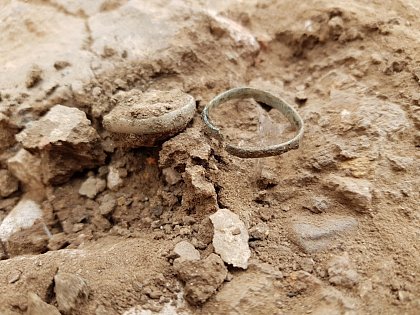
Pir Wali 2019, Bronzeringe in situ.
Workshops
Das International Office der Martin-Luther-Universität hat im Rahmen des Khalifan Survey Projekts (Autonome Region Kurdistan, Irak) mehrere Workshops ermöglicht. Diese dienten einerseits dem wissenschaftlichen Austausch unter den Kollegen und Kooperationspartnern und leisteten andererseits einen wichtigen Beitrag zur Festigung der Zusammenarbeit zwischen dem Seminar für Orientalische Archäologie und Kunstgeschichte der Martin-Luther-Universität Halle-Wittenberg und dem General Directorate of Antiquities of the Kurdistan Regional Government (Erbil, Irak).
Zwischen dem 19.6.-28.6.2014 waren der Generaldirektor Abu Bakir Othman Zendin des General Directorate of Antiquities mit seinem Assistenten Aram Omar Othman zu Gast in Halle. Der Besuch beinhaltete neben der Besichtigung verschiedener archäologischer Stätten, historischer Bauwerke und Museen die Teilnahme an einem Kolloquium zum Thema „Neue Forschungen in Irakisch-Kurdistan“, das gemeinsam mit dem Altorientalischen Institut der Universität Leipzig am 27.6.2014 in Leipzig abgehalten wurde.



